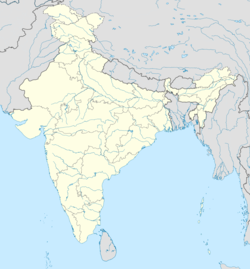Notable Personalities
Advaita Acharya (1434–1559) was a prominent figure in the early Gaudiya Vaishnava tradition and is closely associated with Nabagram in Bengal, where he was born to Sri Kubera Pandit and Srimati Nabha Devi. Revered as an incarnation of both Maha Vishnu and Sadashiva within Gaudiya Vaishnavism, Advaita Acharya played a foundational role in the spiritual and social life of the region.
Advaita Acharya is best known as one of the key members of the Panchatattva—the five principal associates of Sri Chaitanya Mahaprabhu—and is hailed for his fervent devotion, which, according to traditional accounts, prompted Lord Chaitanya’s advent. He was a disciple of Srila Madhavendra Puri and earned the title “Acharya” from his studies of the Vedic scriptures under the tutelage of Santacharya in Phullavati village.
Spending much of his adult life in Shantipur, near Nabagram, Advaita Acharya hosted regular gatherings of Vaishnava devotees and actively spread the practice of bhakti (devotional service) to Krishna. These congregations centered on scriptural discourse drawn from texts such as the Bhagavad Gita and Srimad Bhagavatam. As a respected spiritual teacher, he is credited with guiding many followers—including members of Lord Chaitanya’s family—toward the path of devotion and the congregational chanting of the holy names.
Advaita Acharya’s long life—he is said to have lived for 125 years—was marked by extensive pilgrimages, including travels to Vrindavan and other sacred places. He famously worshiped shaligram shilas (sacred stones) with Ganges water and Tulasi leaves, imploring the Supreme Lord to deliver people from the degradations of the age of Kali. Gaudiya Vaishnava tradition holds that his deep devotion and ardent prayers compelled the divine manifestation of Chaitanya Mahaprabhu.
Advaita Acharya’s principal deities and family line continue to be honored in Shantipur and surrounding areas, preserving his legacy as a revered saint and teacher linked indelibly to Nabagram’s spiritual heritage.



